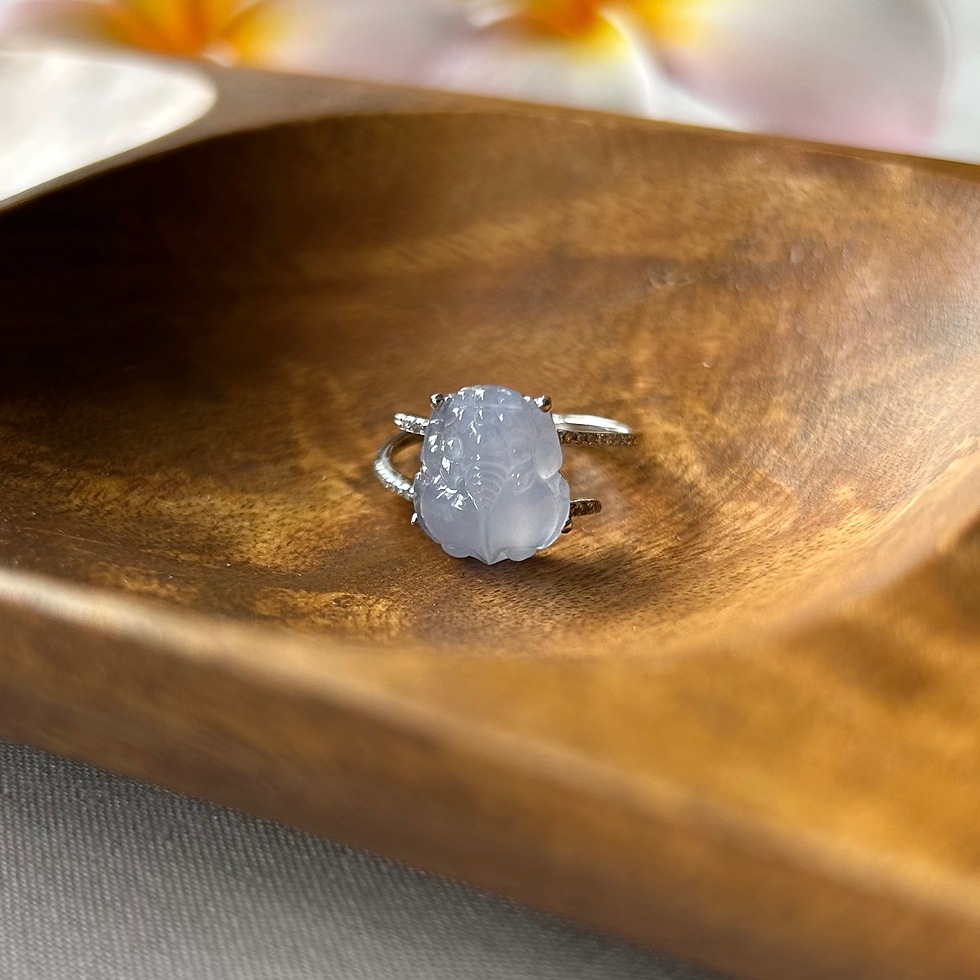Waxy Variety: The Least Understood Variety
- Bryson Lam
- Jun 7
- 3 min read

The oft-heard (though not always well-understood) terms of ‘icy’ and ‘glassy’ dominate the conversation among jadeite hobbyists and traders. Yet, what’s often under-appreciated is the waxy variety of jadeite, well-loved for its evenness of texture, fineness of grain and high levels of clarity.
TDLR: While there are some overlaps between waxy and icy/glassy, waxy-variety jadeite stands out for how the 'cotton' (棉) seemingly dissolves or blends into the jadeite, giving it a clear, highly translucent albeit slightly cloudy appearance.Note: This article features products that may or may not be listed for sale at our store. Enquire for more details.
Contrasting Waxy and Icy
Waxy and icy have some overlaps in concept, in the sense that both have to do with the fineness of grain: to be icy or waxy, the grain has to be fine enough for the piece to be translucent to the naked eye.
Sidetrack: A good test of a piece’s translucency is to run the jadeite over a piece of writing. The clearer you can see the words, the more translucent. That said, because colour obscures translucency (色压种), take into account the intensity of colour to make a fair judgement.
However, the key difference between waxy and icy is in the ‘cleanliness’ of the jadeite. We know that all jadeite has ‘cotton’ (棉), the white, naturally occurring, opaque spots that affect value. Icy-variety would have visible ‘cotton’ spread out among the translucent parts: sometimes evenly, like the famous ‘snowflakes’ (雪花棉) from the Mu-Na mine in Myanmar, sometimes unevenly; sometimes more 'cotton', sometimes less.

Waxy-variety, however, has the ‘cotton’ seemingly dissolved or blended into (化开) the jadeite, giving it a clear, translucent but slightly cloudy appearance. Don’t get us wrong - there is certainly still ‘cotton’ in it. (If there’s no ‘cotton’, it’s not jadeite - period. Hence the saying, 无棉不成翡.) But they don't appear in clumps or spots, and usually take more effort to see it, usually under torchlight.
Below are several examples that show, to varying degrees, the clear but slightly cloudy look of waxy jadeite:



Why is Waxy-Variety Jadeite Valued?
The majority of waxy jadeite's value comes from its fineness of grain and evenness of texture (底子细腻), as well as its clarity (底子干净). Aesthetically, it has a clear and comfortable look that is easy on the eyes. It has depth and glow beyond the surface of the stone, making it appealing and resistant to visual fatigue. With a touch of colour, it also allows the colour to spread more evenly throughout.
What About Waxy vs. Glassy Jadeite?
Glassy jadeite would be a combination of the best traits of icy and waxy: it is so fine-grained and evenly textured throughout the entire piece that it becomes highly translucent to the point of being almost transparent. The cotton is so well-dissolved or blended it is almost not visible to the naked eye.
As a general rule, glassy-variety jadeite is more valuable than waxy-variety, though we also have to keep in mind other value indicators like colour, presence of 'cotton', strength of glow, and the number and type of flaws.

There are many reasons to love waxy-variety jadeite. Its high levels of translucency, sense of depth and soft luminous glow give collectors joy and a sense of ease when looking at it. For all the flaws of nature's gift to us, perfectionists can find some respite in waxy jadeite. We also love it and frequently add waxy pieces to our collection. What about you? Ready to add waxy jadeite to your collection?



Comments